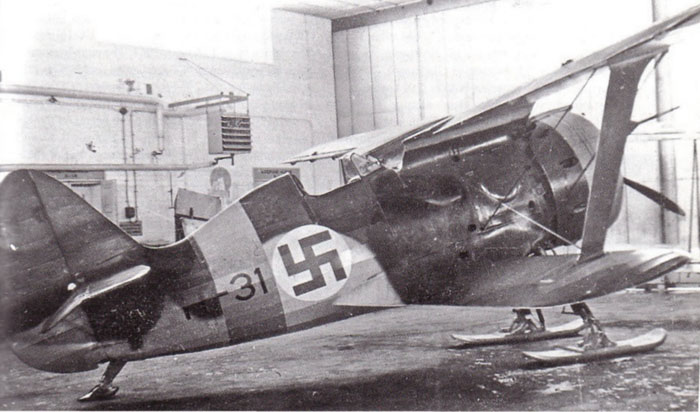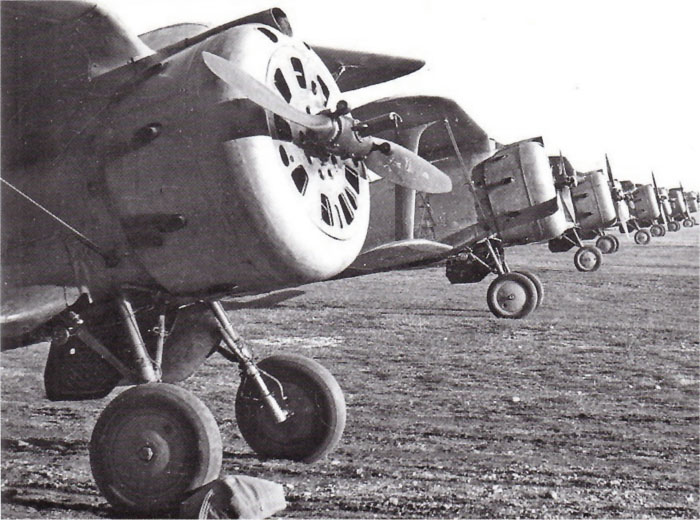
|
I-153s in German markings |
Updated on February 3, 2016
| |
During Barbarossa operation, advancing German troops captured lots of nearly intact planes. Apart for some test flights, they rarely reutilizem them for the Luftwaffe, but preferred to sell them to their allies, Finland in particular.
Nine Chaikas from German depots were handed over to Finnish transfer pilots at Vienna, Austria, on December 7, 1942

From photos, it seems that the prevailing livery was: overall surface grau 02 grey-green, with engine cowling, rudder, ailerons and lower wing surface gelb 04 (yellow). The propeller blades seem painted with schwarzgrun 70 (black green). All planes had crosses on wings and fuselage, and swastikas on the fin. Not all the planes were painted in the same way.
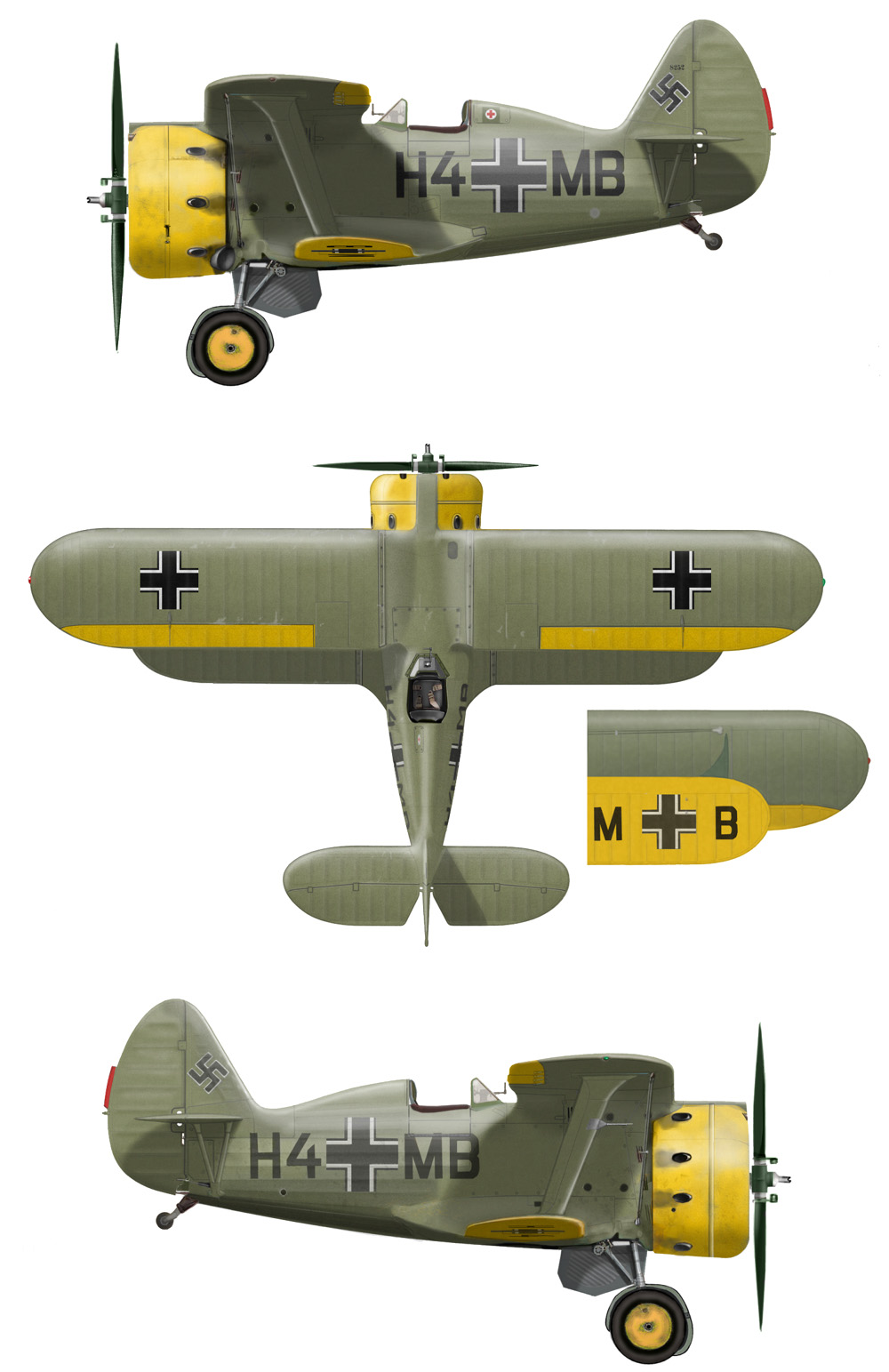
Drawing by Tapani Tuomanen
Plane H4+MB seems to have the rudder, shutter disk and lower face of the upper wings in grau 02. The small light triangle on the rudder could likely be a lightened zone delimited by the shadow of the fin, that was slightly angulated. Black H4+MB code is painted on both sides of the fuselage while H+4 M+B was painted under the lower wings.
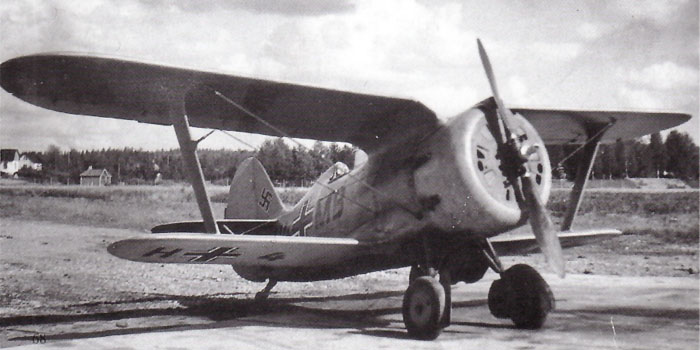
Another plane in German markings was 6627.
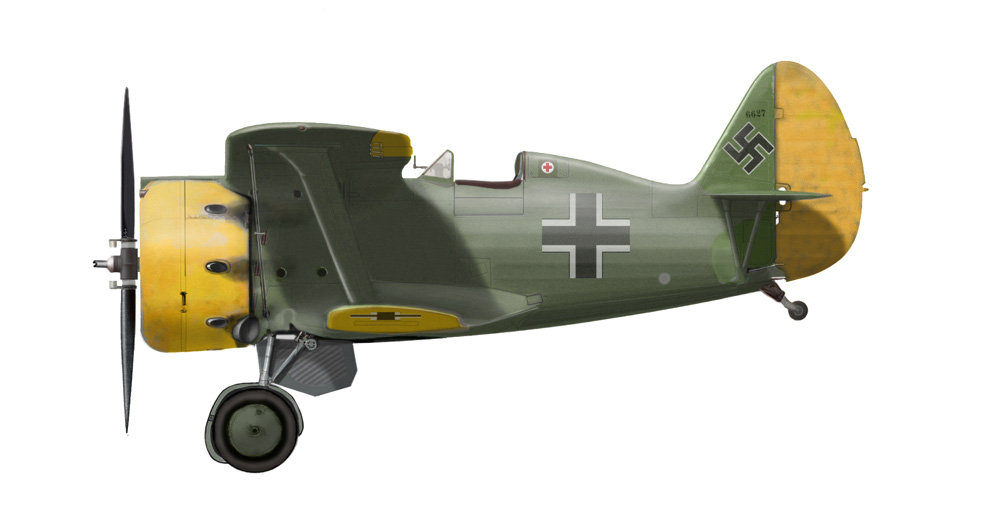
Drawing by Tapani Tuomanen
This plane is photographed after an accident. The code 6627 is readable on its fin, over the swastika. The plane was later repaired and became Finnish IT-24.
The color looks darker than the other ones, and has strange lighter and more glossy areas on its fin and lower wings. It's likely that this plane preserved the Soviet AII green on its fin, lower wing and probably stabilizators and elevators, while the fuselage and upper wing surface, where they found Soviet markings, were repainted in German green Dunkelgrun 71.
The aileron, cowling and rudder seem repainted yellow. We can guess that lower wings undersurfaces were painted yellow, as visible on photos of similar planes, but it's not clear how the other undersurfaces should be. Certainly not silver or light blue. On the photo, part of the wheel disk is visible and in light thorough the grass, and it appears dark as the uppersurfaces, so it can be guessed that the dark color extends under the fuselage.
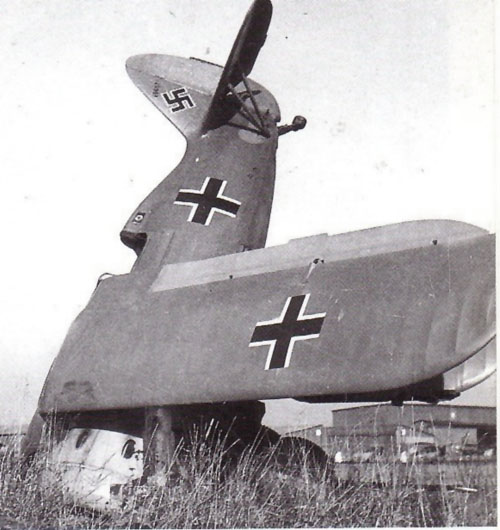
I-153 serial 8252 on Malmi airport in September 1943.
Observing the lower wing leading edges, one can see the division line between the color of the upper and lowr surfaces. This can't be seen on the upper wings, that are supposed painted in solid color.
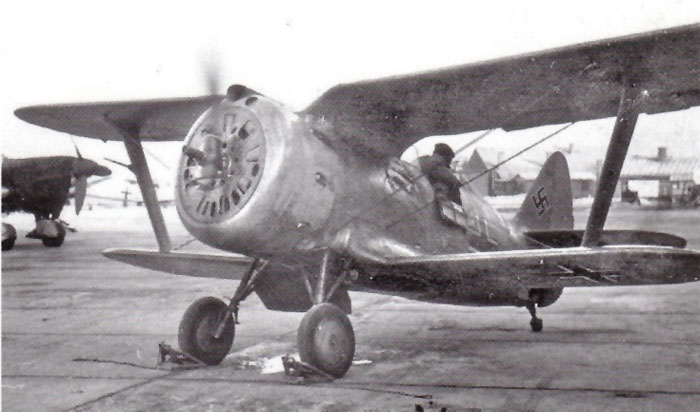
This plane became IT-31 in 2/LeLv 30 since March 1, 1944, and was flown by pilot A.Hartiala
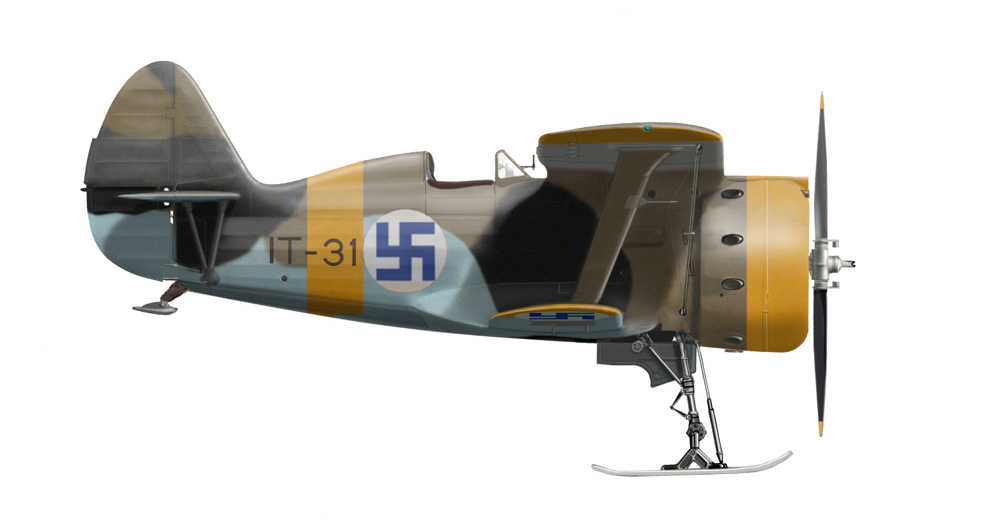
Drawing by Tapani Tuomanen
Here is the plane. Note the ski gear. The tail skid is not of the original type for I-153s. The light patches on the camo are probably due to reflections from an open door.
